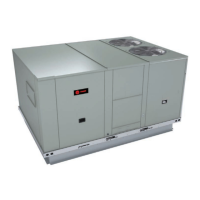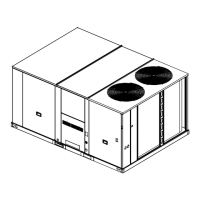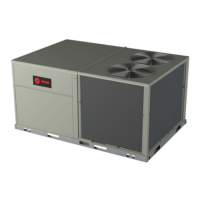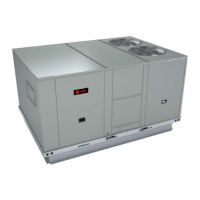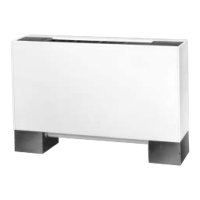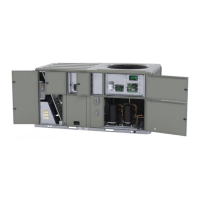32
RT-SVX069A-EN
Microchannel (MCHE) Coils
NNOOTTIICCEE
CCooiill DDaammaaggee!!
FFaaiilluurree ttoo ffoollllooww iinnssttrruuccttiioonnss bbeellooww ccoouulldd rreessuulltt iinn
ccooiill ddaammaaggee..
DDOO NNOOTT uussee aannyy ddeetteerrggeennttss wwiitthh mmiiccrroocchhaannnneell
ccoonnddeennsseerr ccooiillss..
UUssee pprreessssuurriizzeedd wwaatteerr oorr aaiirr OONNLLYY,, wwiitthh pprreessssuurree
nnoo ggrreeaatteerr tthhaann 660000ppssii..
FFoorr aaddddiittiioonnaall iinnffoorrmmaattiioonn rreeggaarrddiinngg tthhee pprrooppeerr
mmiiccrroocchhaannnneell ccooiill cclleeaanniinngg pprroocceedduurree,, rreeffeerr ttoo RRTT--
SSVVBB8833**--EENN
Due to the soft material and thin walls of the MCHE
coils, the traditional field maintenance method
recommended for Round Tube Plate Fin (RTPF) coils
does not apply to microchannel coils. Moreover,
chemical cleaners are a risk factor to MCHE due to the
material of the coil. The manufacturer does not
recommend the use of chemical cleaners to clean
microchannel coils. Using chemical cleaners could lead
to warranty claims being further evaluated for validity
and failure analysis.
The recommended cleaning method for microchannel
condenser coils is pressurized water or air with a non-
pinpoint nozzle and an ECU of at least 180 with
pressure no greater than 600 psi. To minimize the risk
of coil damage, approach the cleaning of the coil with
the pressure washer aimed perpendicular to the face of
the coil during cleaning. Optimum clearance between
the sprayer nozzle and the microchannel coil is 1”–3”.
Final Process
For future reference, record the unit data below in the
blanks provided.
Table 13. Unit data log
Complete Unit Model
Number
Unit Serial Number
Wiring Diagram Numbers
(from unit control panel)
-schematic(s)
-connections
Network ID
MMaaiinntteennaannccee

